Discover Outside/In
Outside/In

Outside/In
Author: NHPR
Subscribed: 26,533Played: 263,889Subscribe
Share
© New Hampshire Public Radio
Description
Outside/In: Where curiosity and the natural world collide.
Look around, and you’ll find everything is connected to the natural world. At Outside/In, we explore that idea with boundless curiosity. We report from disaster zones, pickleball courts, and dog sled kennels, and talk about policy, pop culture, science, and everything in between. From the backcountry to your backyard, we tell stories that expand the boundaries of environmental journalism.
Outside/In is a production of NHPR. Learn more at outsideinradio.org
Look around, and you’ll find everything is connected to the natural world. At Outside/In, we explore that idea with boundless curiosity. We report from disaster zones, pickleball courts, and dog sled kennels, and talk about policy, pop culture, science, and everything in between. From the backcountry to your backyard, we tell stories that expand the boundaries of environmental journalism.
Outside/In is a production of NHPR. Learn more at outsideinradio.org
363 Episodes
Reverse
“Operation Night Cat” is a special three-part series from NHPR’s Document team and Outside/In.Episode 1: Why Did the Deer Cross the Road? A New Hampshire Fish and Game warden follows a tip to a man’s backyard. He finds a twisted game of one-upmanship with digital trophy rooms.This episode contains strong language. For a full list of credits and transcript, visit outsideinradio.org. SUPPORTOperation Night Cat is made possible with listener support. Click here to support independent, investigative journalism. Follow Outside/In on Instagram or join our private discussion group on Facebook. Hosted by Simplecast, an AdsWizz company. See pcm.adswizz.com for information about our collection and use of personal data for advertising.
Introducing a special three-part series from NHPR’s Document team and Outside/In: Operation Night Cat. A New Hampshire Fish and Game warden follows a tip to a man’s backyard. He finds a twisted game of one-upmanship, digital trophy rooms, and one of the biggest poaching cases in recent state history. Then, the hunting investigation takes a surprising turn when it reveals another set of potential crimes – this time, behind the brick walls of New Hampshire’s State Prison for Men. Host Nate Hegyi has spent the past year digging into what happened next. Catch the first episode right here, on November 5th. Hosted by Simplecast, an AdsWizz company. See pcm.adswizz.com for information about our collection and use of personal data for advertising.
According to our unscientific office poll, the annual changing of the clocks has all the popularity of a root canal. With few exceptions, people described the shift to and from Daylight Saving Time as disorienting, arbitrary, and unwelcome.On a more existential level, winding the clocks back and forth reminds us that no matter how concrete minutes and hours may feel, the way we perceive time is fluid. Time flies when you’re having fun. A watched pot never boils. So to celebrate (or perhaps protest) another year setting back the clocks, the Outside/In team has uncovered four mini-stories that will poke at, stretch, or even obliterate your perception of time. From “time expansion experiences”, to time-space synaesthesia, to the slow-motion life of a fly, prepare for a totally different type of time warp.Featuring Steve Taylor, Rhitu Chatterjee, Kevin Healy, Katherine Akey, and Patricia Lynne Duffy.This episode was produced by Felix Poon. For full credits and transcript, visit outsideinradio.org.SUPPORTOutside/In is made possible with listener support. Click here to become a sustaining member of Outside/In. Follow Outside/In on Instagram or join our private discussion group on Facebook.LINKS“To reignite the joy of childhood, learn to live on ‘toddler time’,” by Rhitu Chatterjee, is part of NPR’s special series “Finding Time.”“Can you see time?” (BBC News), by Victoria Gill, includes a drawing depicting an example of what a year might look like to a synesthete.Research reveals which animals perceive time the fastest (ScienceDirect)“When Seconds Turn Into Minutes: Time Expansion Experiences in Altered States of Consciousness,” by Steve Taylor (ResearchGate) Hosted by Simplecast, an AdsWizz company. See pcm.adswizz.com for information about our collection and use of personal data for advertising.
Every so often, oak trees go into overdrive. During these so-called mast years, the gentle patter of falling acorns grows into a mighty downpour and ripples across and over ecosystems like a flood. What happens when a small thing goes from scarce to plentiful? When a player usually hidden behind the scenes vaults onto the main stage? From swimming squirrels and bug-infested weddings, to an explosion in babies named Oaklee, we investigate the myriad ways a sudden surge in abundance can trigger unexpected consequences. This episode is part of a playful exercise in community podcasting, with 6 different shows each producing their own stories about or inspired by the mystery of masting, and releasing them at (approximately) the same time. For other masting stories, check out:Future EcologiesGolden State NaturalistJumpstart NatureLearning from Nature: The Biomimicry PodcastNature's ArchiveWe’ll populate this Spotify Playlist with all our stories as they come out!Featuring Jim Salge, Dave Kelly, Lorén Spears, DeAnna Beasley, Claire Adas, David Wilson, Amelia Pruiett, and Cleveland Evans.This episode was produced by Felix Poon, Marina Henke, and Justine Paradis. For full credits and transcript, visit outsideinradio.org. SUPPORTOutside/In is made possible with listener support. Click here to become a sustaining member of Outside/In. Follow Outside/In on Instagram or join our private discussion group on Facebook. LINKSCheck out the “Who remembers The Great Squirrel Apocalypse of 2018?” Reddit thread.You can watch the home video from David and Claire’s wedding.The US Forest Service keeps a helpful map of active cicada broods in North America, and their expected emergences.Nameberry’s 2024 list of the “Reddest and Bluest Baby Names”NPR’s coverage of the “Oakley, Oakley, Oakleigh” trend. Hosted by Simplecast, an AdsWizz company. See pcm.adswizz.com for information about our collection and use of personal data for advertising.
Thwaites Glacier in Antarctica is massive, bigger than the state of Florida. If it collapses, it could reshape every coast on this planet during this century. That’s why it’s sometimes known as “the Doomsday Glacier.”And yet, until recently, we knew very little about it. Because Thwaites is extremely remote, reachable only by crossing the wildest ocean on the planet, scientists had never observed its calving edge firsthand. In 2019, a ground-breaking international mission set out to change that, and writer Elizabeth Rush was on board to document the voyage. We caught up with her to learn about life on an Antarctic icebreaker, how she grappled with classic Antarctic narratives about exploration (and domination), and how she summons hope even after coming face-to-face with Thwaites. This episode was first published in early 2024. Featuring Elizabeth Rush. SUPPORTOutside/In is made possible with listener support. Click here to become a sustaining member. Follow Outside/In on Instagram or join our private discussion group on Facebook. LINKSIf you’re interested in reading more about the journey to Thwaites, check out Elizabeth’s book, “The Quickening: Creation and Community at the Ends of the Earth”.A paper published in Nature with some of the findings from Elizabeth's voyage, showing that Thwaites has historically retreated two to three times faster than we’ve ever observed. Here’s the one detailing findings about Thwaites’ past extent, extrapolated from their study of ancient penguin bones, and another sharing observations about water currents beneath its ice shelf.The Trump administration has pulled funding for the US’s only Antarctic icebreaker dedicated to scientific research. Read about the fate of the RV Nathaniel B. Palmer in Scientific American. Hosted by Simplecast, an AdsWizz company. See pcm.adswizz.com for information about our collection and use of personal data for advertising.
Ever since a tornado tore through one of St. Louis, Missouri’s poorest neighborhoods, there are piles of bricks all over the place. It’s not just a debris problem. Bricks in St. Louis have a long and complicated history here – the darling of many historic preservationists and a good source of profit to just as many demolition crews. Producer Marina Henke spent a week in North City, tagging along with a brick layer who’s racing against the clock to build back homes. Can North City keep its bricks? Should they even try?Featuring Natalie Hughes, RJ Koscielniak, and Rasheen Aldridge.Produced by Marina Henke. For full credits and transcript, visit outsideinradio.org.SUPPORTOutside/In is made possible with listener support. Click here to become a sustaining member of Outside/In. Follow Outside/In on Instagram or join our private discussion group on Facebook.LINKSThe STL Vacancy Collaborative runs a Demolition Dashboard, showing all approved and completed demolitions in St. Louis City. The 2011 documentary Brick By Chance and Fortune provides a more in-depth look at brick’s history in St. Louis, including its architectural variance. For a comprehensive social and economic history of St. Louis check out Walter Johnson’s The Broken Heart of America.The apocryphal headline and its report of a struggling St. Louis still exists in the New York Times’ archives: In St. Louis Even the Old Bricks Are Leaving Town. In 2017, the podcast 99% Invisible took a closer look at St. Louis brick theft. Hosted by Simplecast, an AdsWizz company. See pcm.adswizz.com for information about our collection and use of personal data for advertising.
What do pastries have to do with environmental justice? Cat butts with the climate crisis? And what US president ate a half-chewed piece of salmon leftover from a bear on reality TV?Grab a pencil (and maybe a pint?) and get ready for the inaugural Outside/In trivia episode we’re calling “Natural Selection.” We’ve got a game called “Guess That Animal!” We’re testing our panel’s knowledge on the environment in movies and music. And, maybe, we’ll learn a thing or two along the way about environmental policy, past and present.Produced by Felix Poon. For full credits and transcript, visit outsideinradio.org. SUPPORTOutside/In is made possible with listener support. Click here to become a sustaining member of Outside/In. Follow Outside/In on Instagram or join our private discussion group on Facebook. Hosted by Simplecast, an AdsWizz company. See pcm.adswizz.com for information about our collection and use of personal data for advertising.
When designer Matt Leacock decided to make a board game about climate action, he knew he wanted to make it – first and foremost – fun to play. “If we sold anything as an educational game… people would run screaming and running for the hills,” he told us. But can simulating the climate crisis really make for a good Friday night with your friends? What are the limits to gamifying social issues as complex as global warming?In this episode, we speak with Matt about what it took to design an entertaining game about one of the most challenging topics of our time, and enlist a few friends to playtest his game: “Daybreak.” Featuring Matt Leacock, with appearances from NHPR’s Marina Henke, Nick Capodice and Hannah McCarthy. This episode was produced by Taylor Quimby. For a full list of credits and transcript, visit outsideinradio.org SUPPORTTo share your questions and feedback with Outside/In, call the show’s hotline and leave us a voicemail. The number is 1-844-GO-OTTER. No question is too serious or too silly.Outside/In is made possible with listener support. Click here to become a sustaining member of Outside/In. Subscribe to our newsletter (it’s free!).Follow Outside/In on Instagram and BlueSky, or join our private discussion group on Facebook. LINKSRead game designer Matt Leacock’s 2020 NYT opinion piece about his game, Pandemic, and what it says about social cooperation during an actual pandemic. One of Daybreak’s inspirations was “The 100% Solution” by Solomon Goldstein-Rose. Here’s his TED Talk about building a new global electricity system. For more insight into how Daybreak was made, check out Matt and co-designer Matteo Menapace’s design diaries. A climate scientist/board gamer’s break down of the science and gameplay of DaybreakListen to Civics 101’s great episode on civics-centered board games. Hosted by Simplecast, an AdsWizz company. See pcm.adswizz.com for information about our collection and use of personal data for advertising.
For humans, roads epitomize freedom. For wildlife, it’s a different story: a million animals are killed by cars every day in the US alone. How did our infrastructure turn so deadly? And what are people trying to do about it?In this episode, we look at how two very different species are impacted by roads. Along the way, we visit a turtle rescue clinic, and hear about a celebrity cougar that was trapped in the Hollywood Hills.This episode was first produced in 2023.Right now, the Trump administration is planning to rescind the Roadless Rule – a regulation that restricts the building of new roads in nearly 60 million acres of US forests. Conservationists warn that this will fragment forests and threaten endangered species. A public comment period on the plan is open until September 19th.Featuring Ben Goldfarb, Alexxia Bell, Natasha Nowick, and Michaela Conder.For full credits and transcript, visit outsideinradio.org. SUPPORTOutside/In is made possible with listener support. Click here to become a sustaining member of Outside/In. Follow Outside/In on Instagram or join our private discussion group on Facebook. LINKSSeptember 19, 2025 is the deadline to submit a comment about the potential effects of rescinding the Roadless Rule.Check out Crossings: How Road Ecology is Shaping the Future of Our Planet, by Ben Goldfarb.Read more about The Turtle Rescue League in Of Time and Turtles: Mending the World, Shell by Shattered Shell, by Sy Montgomery. Hosted by Simplecast, an AdsWizz company. See pcm.adswizz.com for information about our collection and use of personal data for advertising.
In the early 1900s, people didn’t trust refrigerated food. Fruits and vegetables, cuts of meat… these things are supposed to decay, right? As Nicola Twilley writes, “What kind of unnatural technology could deliver a two-year old chicken carcass that still looked as though it was slaughtered yesterday?”But just a few decades later, Americans have done a full one-eighty. Livestock can be slaughtered thousands of miles away, and taste just as good (or better) by the time it hits your plate. Apples can be stored for over a year without any noticeable change. A network called the “cold-chain” criss-crosses the country, and at home our refrigerators are fooling us into thinking we waste less food than we actually do. Today, refrigeration has reshaped what we eat, how we cook it, and even warped our very definition of what is and isn’t “fresh.” Featuring Nicola Twilley.For full credits and transcript, visit outsideinradio.org. SUPPORTOutside/In is made possible with listener support. Click here to become a sustaining member of Outside/In. Follow Outside/In on Instagram or join our private discussion group on Facebook. LINKSYou can find Nicola’s new book “Frostbite: How Refrigeration Changed Our Food, Our Planet and Ourselves,” at your local bookstore or online. Hosted by Simplecast, an AdsWizz company. See pcm.adswizz.com for information about our collection and use of personal data for advertising.
We’re catching some air this week, and talking things with wings! Quandaries range from the practical (how do different animal and insect wings differ?) to the ethereal (this includes dragons). Here’s the questions we’ll be answering…What makes wings different?How have wings in nature inspired human flight? Did we ever solve the colony collapse problem with bees?Why do so many cultures have dragon myths?Featuring Jonathan Rader, Tim Burbery, Lauren Ponisio, and Andrew Howley. For full credits and transcript, visit outsideinradio.org.For our next Outside/Inbox roundup, we’re looking for questions about healing! We’re casting a wide net here: homeopathy, neuroplasticity, chronic disease, plant resiliency. Send us your questions by recording yourself on a voice memo, and emailing that to us at outsidein@nhpr.org. Or you can call our hotline: 844-GO-OTTER.SUPPORTOutside/In is made possible with listener support. Click here to become a sustaining member of Outside/In. Follow Outside/In on Instagram or join our private discussion group on Facebook.LINKSThe video of the sandhill crane landing lives on TikTok. Here’s that video of an albatross walking on land after years at sea. Timothy Burbery is the author of Geomythology: How Common Stories Reflect Earth Events.The hypothesis connecting the mythical griffin and Protoceratops fossils was popularized by Adrienne Mayor, author of The First Fossil Hunters: Dinosaurs, Mammoths, and Myth in Greek and Roman Times.Here's a paper critiquing Mayor's interpretations, "Did the horned dinosaur Protoceratops inspire the griffin?"A USGS volcanologist on what geologists missed for so long in the stories of Pele, from indigenous Hawaiian oral tradition. Hosted by Simplecast, an AdsWizz company. See pcm.adswizz.com for information about our collection and use of personal data for advertising.
Shipwrecks captivate our imagination, and are the subject of many books, academic papers, and movies—from the world-famous Titanic, to sunken World War II warships, to ancient fishing canoes. Some describe them as time capsules of our maritime history, waiting to be discovered and opened.But there’s a group of people who are drawn to shipwrecks for very different reasons, and it sometimes leads to the demise of the wrecks themselves: fishermen.In this episode, why archaeologists and fishermen have sometimes been at odds over shipwrecks, and the federal government program that’s bringing them together under one common cause.Featuring Ben Roberts, Mike Bailey, Tom Hill, Calvin Meyers, and Ben Haskell.Produced by Felix Poon. For full credits and transcript, visit outsideinradio.org. SUPPORTOutside/In is made possible with listener support. Click here to become a sustaining member of Outside/In. Follow Outside/In on Instagram or join our private discussion group on Facebook. LINKSLearn more about the many known shipwrecks of Stellwagen Bank, including the Portland, known as “New England’s Titanic.”Check out some of the other research projects at Stellwagen Bank on topics as varied as whales, sand lances, and seabirds. Hosted by Simplecast, an AdsWizz company. See pcm.adswizz.com for information about our collection and use of personal data for advertising.
GPS is essential these days. We use it for everything, from a hunter figuring out where the heck they are in the backcountry, to a delivery truck finding a grocery store, to keeping clocks in sync.But our reliance on GPS may also be changing our brains. Old school navigation strengthens the hippocampus, and multiple studies suggest that our new reliance on satellite navigation may put us at higher risk for conditions like dementia.In this episode (first released in 2024), we map out how GPS took over our world—from Sputnik’s Doppler effect to the airplane crash that led to its widespread adoption—and share everyday stories of getting lost and found again.Featuring Dana Goward, M.R. O’Connor, Christina Phillips, Michelle Liu, Julia Furukawa, and Taylor Quimby.Produced by Nate Hegyi. For full credits and transcript, visit outsideinradio.org. LINKSIn 2023, Google Maps rerouted dozens of drivers in Los Angeles down a dirt road to the middle of nowhere to avoid a dust storm. Maura O’Connor traveled from rural Alaska to the Australian bush to better understand how people navigate without GPS—and sometimes even maps. Here’s the peer-reviewed study, published in the journal Nature, that found that young people who relied on GPS for daily driving had poorer spatial memories. Another study out of Japan found that people who use smartphone apps like Google Maps to get around had a tougher time retracing their steps or remembering how they got to a place compared to people who use paper maps or landmarks. Hosted by Simplecast, an AdsWizz company. See pcm.adswizz.com for information about our collection and use of personal data for advertising.
Fungi used to be considered plants. Bad plants. Carl Linnaeus even referred to them as “the poorest peasants” of the vegetable class. This reputation stuck, and fungi were considered a nuisance in the Western world well into the 20th century.Patricia Ononiwu Kaishian is trying to rewrite that narrative. Her new book, Forest Euphoria: The Abounding Queerness of Nature catalogs fungi that sprout from the shells of beetles, morph with their sexual partners into one being and exhibit as many as 23,000 mating types. Patty believes that fungi’s ability to defy our cut and dry assumptions about the natural world is actually their superpower. All it takes is to first accept that they’re queer as heck. Featuring Patricia Ononiwu Kaishian. Produced by Marina Henke. For full credits and transcript, visit outsideinradio.org.SUPPORTOutside/In is made possible with listener support. Click here to become a sustaining member of Outside/In. Follow Outside/In on Instagram or join our private discussion group on Facebook.LINKSYou can find Patty’s new book Forest Euphoria at your local bookstore or online. Local to Albany? Visit the fungi exhibit that Marina toured at the New York State Museum: Outcasts: Mary Banning’s World of Mushrooms.Patty has had the chance to name several new species of fungi. In 2021 she published an article documenting those species, with some pretty great photos of laboulbeniales (those are the fungi that grow from arthropod shells). Check out C. L. Porter’s 1969 address to the Indiana Academy of Sciences where he critiques fellow mycologists for being “meek.” It’s brutal.One of Patty’s favorite films is Microcosmos, a 1996 French documentary that investigates the daily interactions of insects. It’s not direct mushroom content per se, but it is beautiful. Hosted by Simplecast, an AdsWizz company. See pcm.adswizz.com for information about our collection and use of personal data for advertising.
Last spring, a curious listener called with an unusual question about coyote urine. Is it – as advertised by companies who sell it – an effective, all natural pest deterrent? And more importantly: “Who are the coyotes that are providing this urine?”Since then, producer Taylor Quimby has been trying to find out… and with literal gallons of the stuff available online, he discovered the answers aren’t pretty. Today on Outside/In, we peek inside the unregulated Pandora’s box of urine farming. Does it work? Is it ethical? And is anybody willing to actually talk about it? Featuring Jeannie Bartlett, Caroline Long, Ed Brookmyer, Laura Koivula. Produced by Taylor Quimby. For full credits and transcript, visit outsideinradio.org.SUPPORTOutside/In is made possible with listener support. Click here to become a sustaining member of Outside/In. Follow Outside/In on Instagram or join our private discussion group on Facebook.LINKSThis 1998 study assessed coyote urine as a deterrent for deer, and found (with some caveats) a 15-24% reduction in deer browsing after exposure to the urine. However, coyote urine had no measurable effect on the deer browsing of yew saplings in this more recent study. Websites for some coyote urine brands, like PredatorPee.com and Shake-away animal repellents, claim that they source urine from regulated farms that treat animals humanely, but did not provide more information when asked. This article from Cleveland.com details the conditions at The Grand River Fur Exchange, a fur and urine farm where hundreds of animals were found in poor condition after the owner’s death. Hosted by Simplecast, an AdsWizz company. See pcm.adswizz.com for information about our collection and use of personal data for advertising.
It’s a weird time to be an environmental scientist. The proposed cuts to federal science funding in the United States are profound, and if they come to pass, it’s not clear what American science will look like on the other side. But for many researchers, science is much more than a career: it’s a community, lifestyle, and sometimes even a family business. Outside/In producer Justine Paradis tagged along with researchers in the field to learn what it’s like to be a scientist right now. We visit one of the oldest atmospheric monitoring stations in the country, and venture onto the Finger Lakes with an ad-hoc group of researchers struggling to understand an emerging threat to water quality: harmful algal blooms.This is a glimpse of the people behind the headlines, navigating questions both personal and professional, and trying to find ways to continue their work, even as much of their funding is simultaneously collapsing around them. Featuring Bob Howarth, Joshua Thienpont, Irena Creed, Nico Trick, Anita Dedić, and Tom Butler, with appearances from Roxanne Marino, Renee Santoro, and Garreth Smith. SUPPORTTo share your questions and feedback with Outside/In, call the show’s hotline and leave us a voicemail. The number is 1-844-GO-OTTER. No question is too serious or too silly.Outside/In is made possible with listener support. Click here to become a sustaining member of Outside/In. Subscribe to our newsletter (it’s free!).Follow Outside/In on Instagram and BlueSky, or join our private discussion group on Facebook. LINKSNY67, one of the oldest atmospheric monitoring stations in the U.S., was established by Gene Likens, who helped discover acid rain in the 1960s (The Guardian). More on the cuts to the National Science Foundation from The Guardian. It references a Federal Reserve Bank analysis, finding that for every dollar spent on R&D by the major federal agencies, there’s been a return to U.S. taxpayers of $1.50-$3.00—in other words, 150-300%.The American Association for the Advancement of Science has been tracking the federal science budget for decades, and publishes an ongoing analysis breaking down the proposed cuts.A map tracking harmful algal blooms in New York State. In the early 2000s, some wondered if seeding the ocean with iron could be a climate solution. They hoped that the iron would trigger the growth of marine phytoplankton and sequester carbon in the ocean. But when Charlie Trick and his colleagues studied it, they learned it had unintended consequences: it triggered the growth of highly toxic algal blooms.A paper on the rise of ammonia, using data from the National Atmospheric Deposition Program and co-authored by Tom Butler.A letter condemning the proposed cuts to science in FY26, signed by more than 1200 members of the National Academy of Sciences. CREDITS Produced by Justine Paradis. For full credits and transcript, visit outsideinradio.org. Hosted by Simplecast, an AdsWizz company. See pcm.adswizz.com for information about our collection and use of personal data for advertising.
Helium is full of contradictions. It’s the second most abundant element in the universe, but is relatively rare on Earth. It’s non-reactive, totally inert—yet the most valuable helium isotope is sourced from thermonuclear warheads. And even though we treat it as a disposable gas, often for making funny voices and single-use party balloons, our global supply of helium will eventually run out. That’s because, at a rate of about 50 grams per second, this non-renewable resource is escaping the atmosphere for good. In this edition of The Element of Surprise, our occasional series about the hidden histories behind the periodic table’s most unassuming atoms, we examine the incredible properties and baffling economics of our most notable noble gas. Featuring Anjali Tripathi and William Halperin. This episode was produced by Taylor Quimby and first released in 2024. For a full list of credits and a transcript, go to outsideinradio.org. SUPPORTOutside/In is made possible with listener support. Click here to become a sustaining member of Outside/In. Subscribe to our newsletter to get occasional emails about new show swag, call-outs for listener submissions, and other announcements. Follow Outside/In on Instagram or join our private discussion group on Facebook.LINKSRead John Paul Merkle’s petition arguing to change the name of helium to “helion.”Despite being about a quarter century old, this passage from “The Impact of Selling the Federal Helium Reserve” has a pretty comprehensive list of the uses and properties of helium.More on the recent sale of the Federal Helium Reserve (NBC News)Physicist William Halperin said the idea of mining helium-3 on the moon was… unlikely… but that hasn’t stopped this startup company from trying it. (Wired)Want to learn more about the weird history of American airships? Check out this film produced by the U.S. government in 1937, when they were still hoping to keep our airship program afloat. Hosted by Simplecast, an AdsWizz company. See pcm.adswizz.com for information about our collection and use of personal data for advertising.
“In the last days of the fourth world I wished to make a map for those who would climb through the hole in the sky.”That’s the first line of the poem “A Map to the Next World” by Muscogee writer and former U.S. Poet Laureate Joy Harjo. It’s a piece that’s inspired Aquinnah Wampanoag writer Joseph Lee as he undertakes one of journalism's most nuanced beats: covering hundreds of unique tribal communities. Sometimes those stories fit into neat narratives – about how tribes are restoring nature and winning back land – but that’s not always the case. What's it like covering Indigenous communities responding and adapting to climate change? And how are these tribes thinking about their futures? We talk to Joseph Lee about some of the stories he’s covered, and his own attempt to make a map to the next world. Featuring Joseph Lee.Produced by Felix Poon. For full credits and transcript, visit outsideinradio.org. SUPPORTOutside/In is made possible with listener support. Click here to become a sustaining member of Outside/In. Follow Outside/In on Instagram or join our private discussion group on Facebook. LINKS“A Map to the Next World,” is the title of a poem by Muscogee poet Joy Harjo.Nothing More of This Land is a new book from award-winning journalist Joseph Lee, about Indigenous identity and the challenges facing Indigenous people around the world.Read Joseph Lee’s reporting on:The Northwestern Shoshone’s restoration work to the Bear River (Vox)The controversy over a proposed gold mine in the Yukon Kuskokwim Delta (Grist)The Shinnecock tribe’s response to sea-level rise in the Hamptons Hosted by Simplecast, an AdsWizz company. See pcm.adswizz.com for information about our collection and use of personal data for advertising.
In 1970, marine architect Charlie Canby got an odd assignment: Design a 600-foot ship for an undisclosed purpose and an undisclosed customer. Only after it was built did he finally find out what it was for. “I was dumbfounded,” he said. “I drove away in a daze. I could not believe what we were really doing.”In this episode, reporter Daniel Ackerman tells the unbelievable story of a boat, a government conspiracy, and the birth of a new industry that could change the way we look at oceans forever. Featuring Charlie Canby, Andrew Thaler, Wernher Krutein, and Hank Philippi RyanProduced by Daniel Ackerman. For full credits and transcript, visit outsideinradio.org.SUPPORTOutside/In is made possible with listener support. Click here to become a sustaining member of Outside/In. Follow Outside/In on Instagram or join our private discussion group on Facebook.LINKSCheck out this 1975 New York Times article published after reporters discovered the true mission of the Glomar Explorer.A corporate update for shareholders detailing The Metals Company’s recent test of deep-sea mining. Another archival report from The New York Times details the SEC investigation into whether investors in the Glomar Explorer were misled. Hosted by Simplecast, an AdsWizz company. See pcm.adswizz.com for information about our collection and use of personal data for advertising.
Today on Outside/In, we’re sharing an episode from our friends and partners at Common Land.Common Land explores the creation stories behind protected land. Each season takes a deep dive into the history, science and politics behind the creation of one particular patch of protected, common land.Season two of Common Land, produced in partnership with New Hampshire Public Radio, follows documentarian Matthew Podolsky as he attempts to thru-hike the Appalachian Trail with his 65-year-old mom, Candy. Matt and his mom face extreme weather, illness, and injury as they trek 2,200 miles from Georgia to Maine. Along the way, Matt shares stories of remarkable people, surprising history, and the modern challenges facing the Appalachian Trail — all as the iconic footpath marks its 100th anniversary.You can listen to episode two of the new season right now, on Apple Podcasts, Spotify, or wherever you prefer to listen. SUPPORTOutside/In is made possible with listener support. Click here to become a sustaining member of Outside/In. Follow Outside/In on Instagram or join our private discussion group on Facebook. Hosted by Simplecast, an AdsWizz company. See pcm.adswizz.com for information about our collection and use of personal data for advertising.



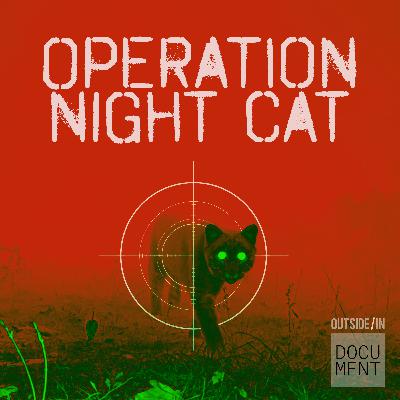

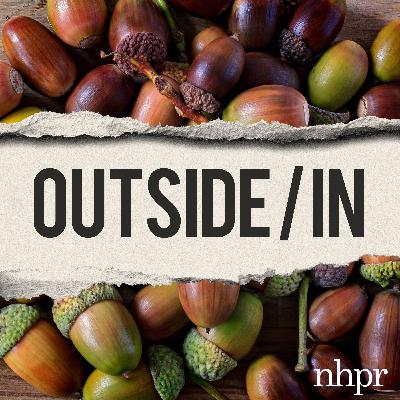
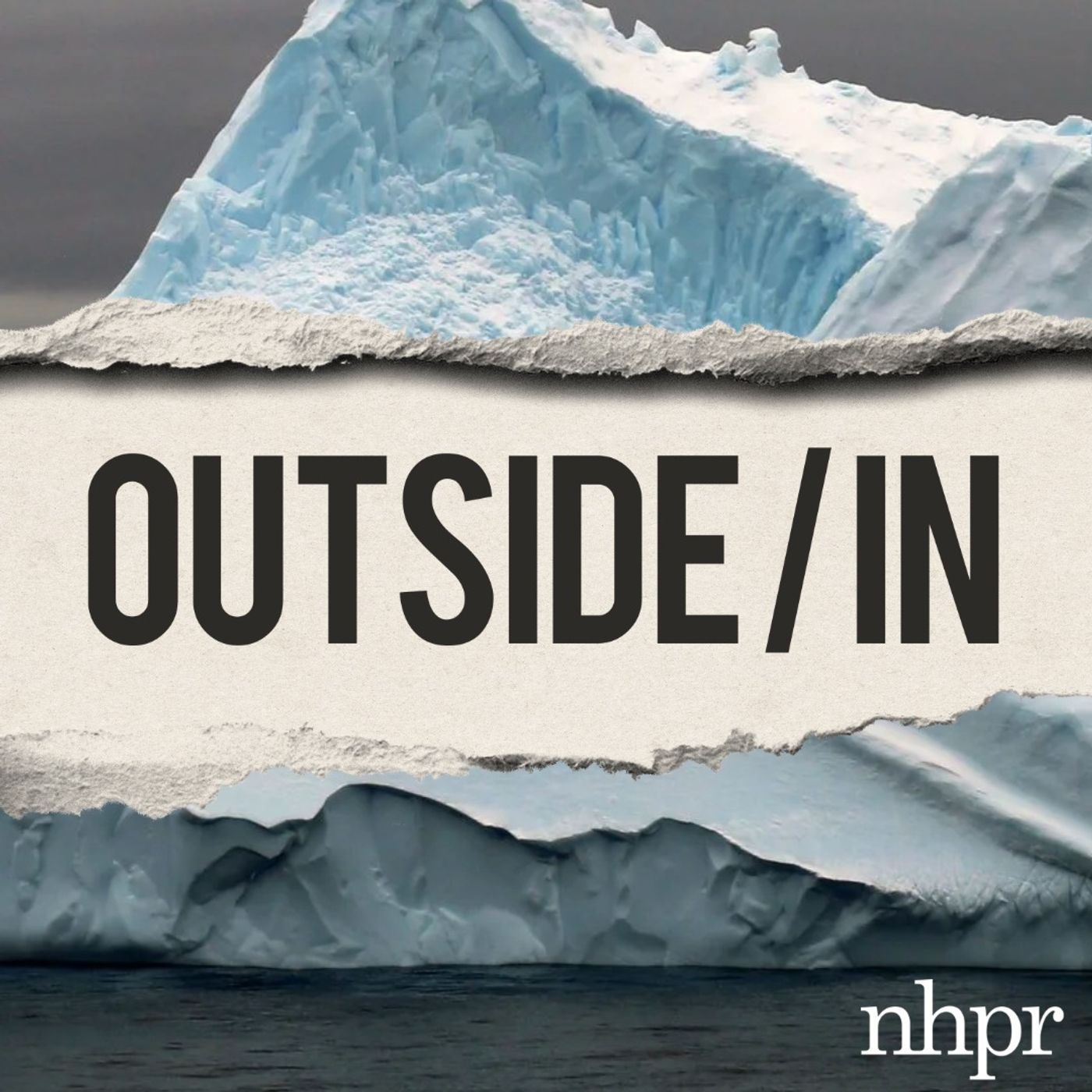
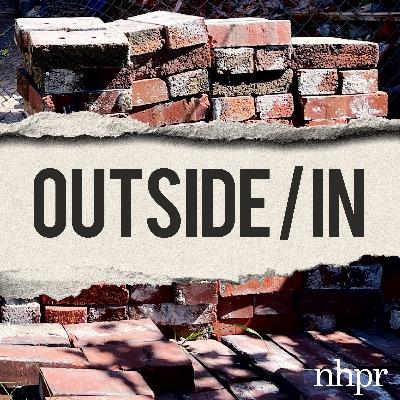
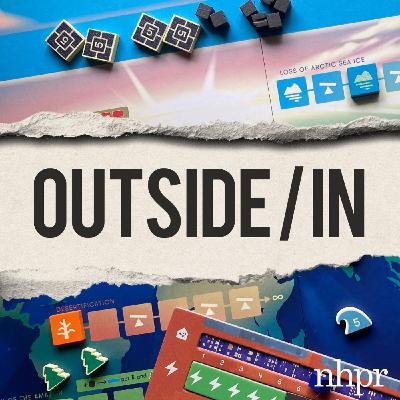


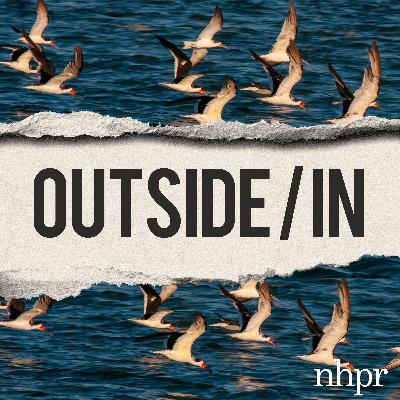
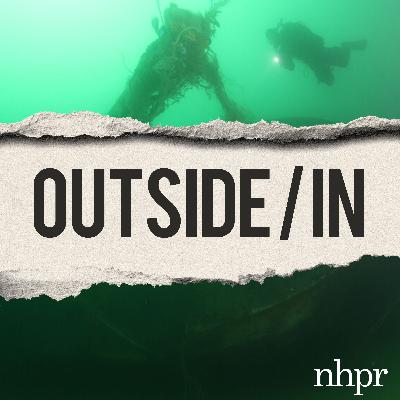
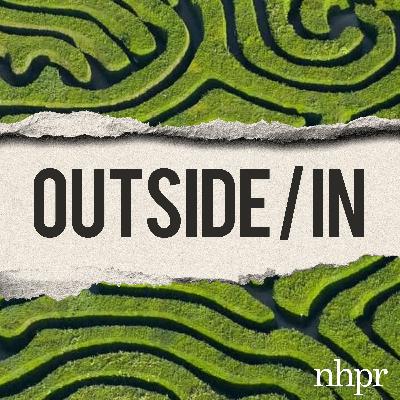
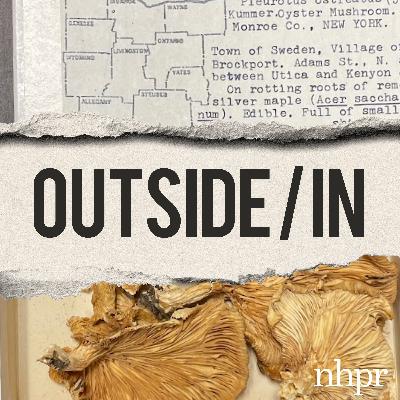

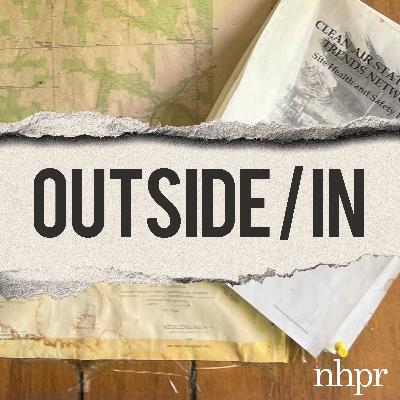

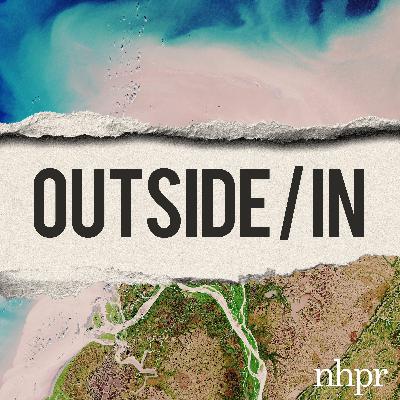
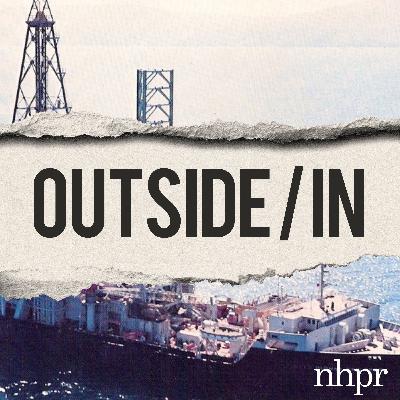



Eu vou fazer 😘🧓🧓🧓
Great episode. Important to share.
The editing on this episode is really rough.
Didn't cover ground source heat pumps! Will work when outside temperature are lower.
it seems to be extremely frustrating to do business with American government..
Best Outside/In episode so far in my opinion.
You need to make the audio a little hotter. It's a bit lower than the average podcast level.
Probably the worst episode of the show. Cool that queer people use and enjoy this 'language'. Shame that it has to be based on a pseudoscience and made up bullshit, easily used to con people. We have enough 'return to our roots' counter-science today, no need to enable more people to think that their beliefs are more important then provable facts.
cool cool, broken record. if you must focus on the virus, you need to say something different. This is lazy work. I've got an unsubscribe coming for the next one.
Astrology is a psuedoscience irregardless of what the person you ask tells you.
Kinda makes you think differently about the phrase "a murder of crows", huh?
I'd be willing to bet that their BEST stories involve Sasquatch!
Always quality work, but no new episodes? Or is Patient Zero the only focus now?
Japanese knotweed root is used to treat Lyme disease. See Stephen Harrod Buhner's book.
Really excellent job explaining the background on this topic! 👍
Anybody know what that cool background music is?
When you start the podcast and start wondering "hum.. Why is this Spanish? Am I on the wrong podcast? " x)
m
m
Having worked for European and Skandinavian companies (in the US) for many years I've heard a lot about folks working less hours and living better lives over there. The problem in the US is that we are as a culture instilled with the old Puritan / Yankee work ethic. The flip of this is the olde "Idle hands are the Devil's playground'. What was not said by the host or the NHPR CEO in this episode is that going to a 32 hour week would not be looked at positively by many of the people who donate to NHPR or by any Trusts or Government subsidy managers who give to NHPR. An unfortunate truth I am afraid.